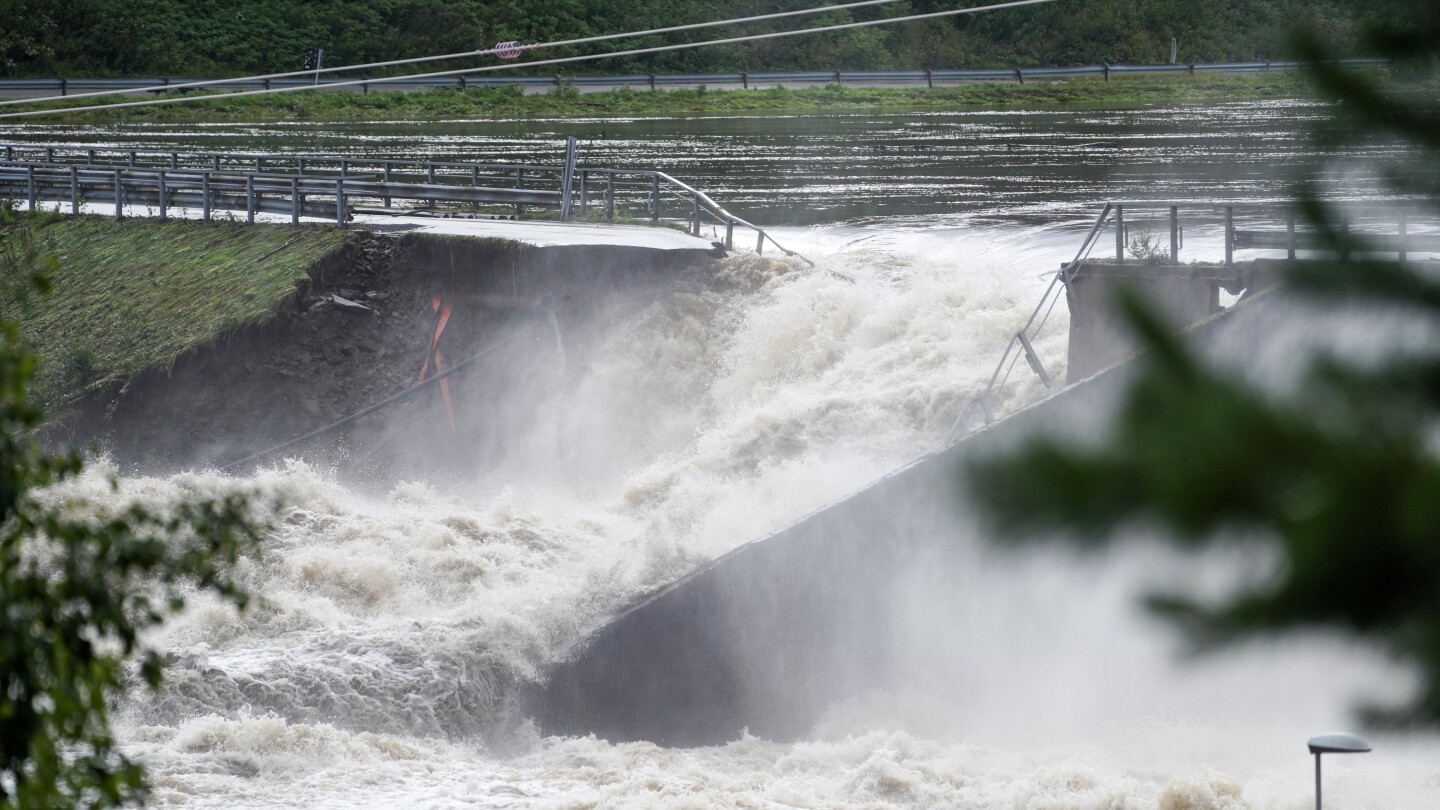COPENHAGEN, Denmark (AP) — More evacuations were being considered Friday in southeastern Norway, where the level of water in swollen rivers and lakes continued to grow after days of torrential rain.
Huge amounts of water, littered with broken trees, debris and trash, were thundering down the usually serene rivers. It flooded abandoned houses, left cars coated in mud and swamped camping sites.
One of the most affected places was the town of Hønefossen where the Begna river had gone over its banks and authorities were considering moving more people downstream for fear of landslides. Up to 2,000 people have already been evacuated.
“We constantly try to think a few steps ahead. We are ready to press an even bigger red button,” Magnus Nilholm, a local emergency manager in the Hønefossen region, told Norwegian broadcaster NRK.
Ivar Berthling of Norway’s Water Resources and Energy Directorate (NVE) told Norwegian news agency NTB that the water levels around Hønefossen, some 40 kilometers (25 miles) north of Oslo, were expected to continue rising and remain high until at least Monday. Up north, near the Strondafjorden lake, the water level was reported to be 2.5 meters (8.2 feet) above normal.
“We are still facing critical days,” the Ringerike municipality, where Hønefossen lies, said in a statement.
Prime Minister Jonas Gahr Støre was to visit Hønefossen later Friday while King Harald and Queen Sonja were to visit the headquarters of the NVE.
Authorities did not provide a nationwide count of evacuees. According to a rough estimate, damage could so far amount to 1 billion kroner (nearly $100 million).
Authorities on Friday urged people not to check on their cabins in the devastated part of the country.
“Hytte,” the Norwegian word for cabin, is part of the Scandinavian country’s outdoors lifestyle, and thousands of Norwegians have access to a cabin — some in the mountains, others by the coast — that they use as a retreat from everyday life.
”We fully understand that many cabin owners are anxious about the cabin’s condition after the ravages of the extreme weather, but we hope people will abstain now from making the trip just to check,” Lars Aune of the National Police said in a statement. “This is to avoid unnecessary strain on exposed roads.”
Storm Hans on Monday and Tuesday battered northern Europe, leading to transportation distruption, flooding and power cuts across the Nordic and Baltic region. At least three people were killed.
Southeastern Norway was particularly badly affected. A hydroelectric river dam collapsed Wednesday as water forced its way through, and earlier this week a train derailed in neighboring Sweden when a railway embankment was washed away by floods.

